The Jiaolong, China's manned deep-sea research submersible, Tuesday morning dived into the Mariana Trench, the deepest part of the world's oceans , with a Xinhua News Agency journalist on board.
This is the latest of a string of major technological events that China has witnessed in the science and tech world over the past few months, including mining of flammable ice, maiden flight of homegrown large passenger jet C919 , in-orbit refueling of cargo spacecraft Tianzhou-1, launch of the first domestically developed and built aircraft carrier.
China is a few steps closer to becoming a world powerhouse of scientific and technological innovation.
The Jiaolong reached the planned depth of 4,811 meters at 9:49 a.m. local time Tuesday and will stay underwater until 4 p.m. With two mechanical arms, the submersible will collect samples of sea water, sediment, deep-sea life and rocks depending on the circumstances. The mission will study the mineralogy and geochemistry of sediment and rocks in the area to better understand geological activities. Research will include deep-sea microbes and other life forms.
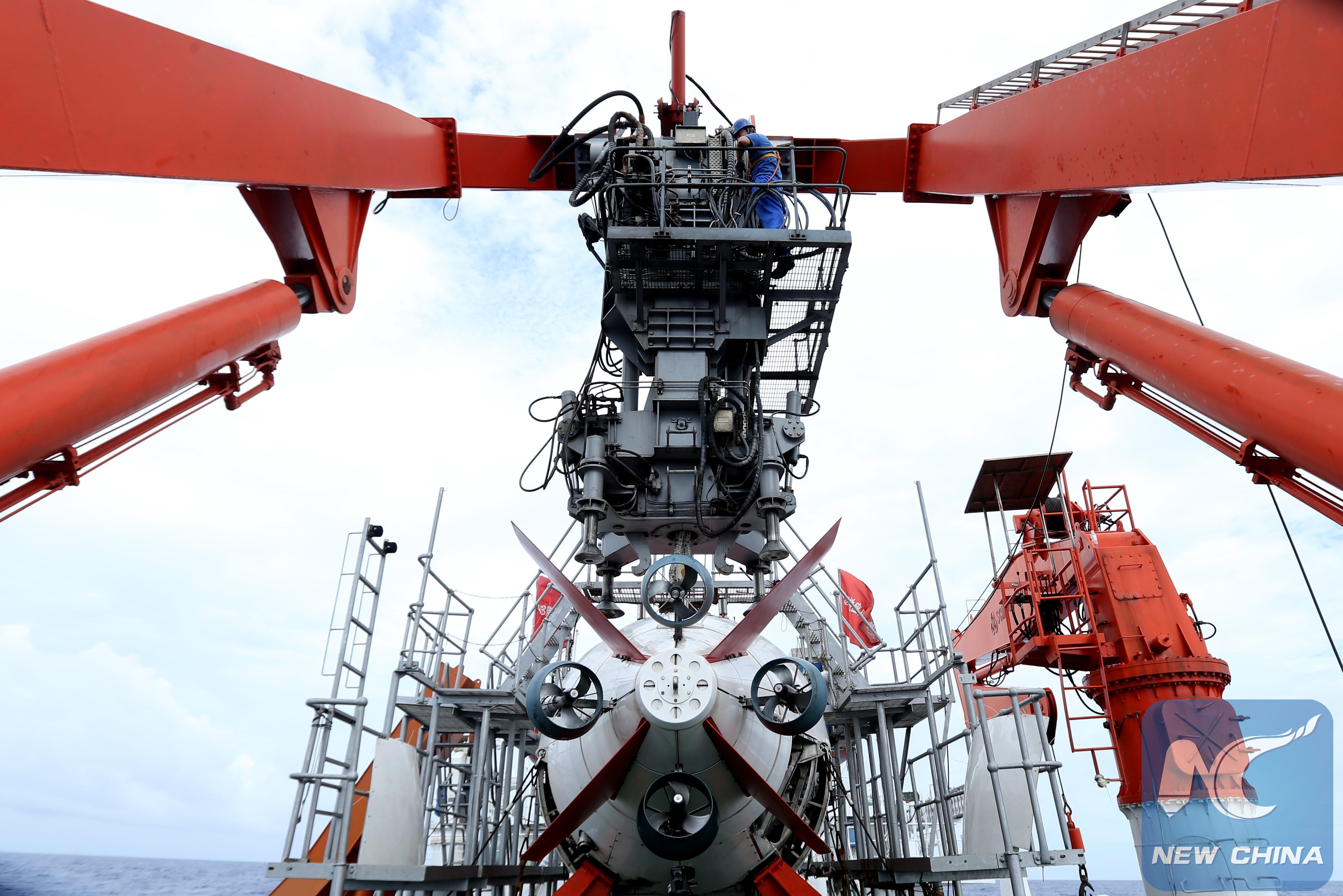
Technicians prepare for the Jiaolong's dive in the Mariana Trench on its mother ship the Xiangyanghong 09, May 22, 2017. (Xinhua/Liu Shiping)
Here are some of the major technological progresses that China made over the past two months.
COMBUSTIBLE ICE
Last Thursday, China announced that it had succeeded in mining combustible ice in the South China Sea, a major breakthrough that may lead to a global energy revolution, after nearly two decades of research and exploration.
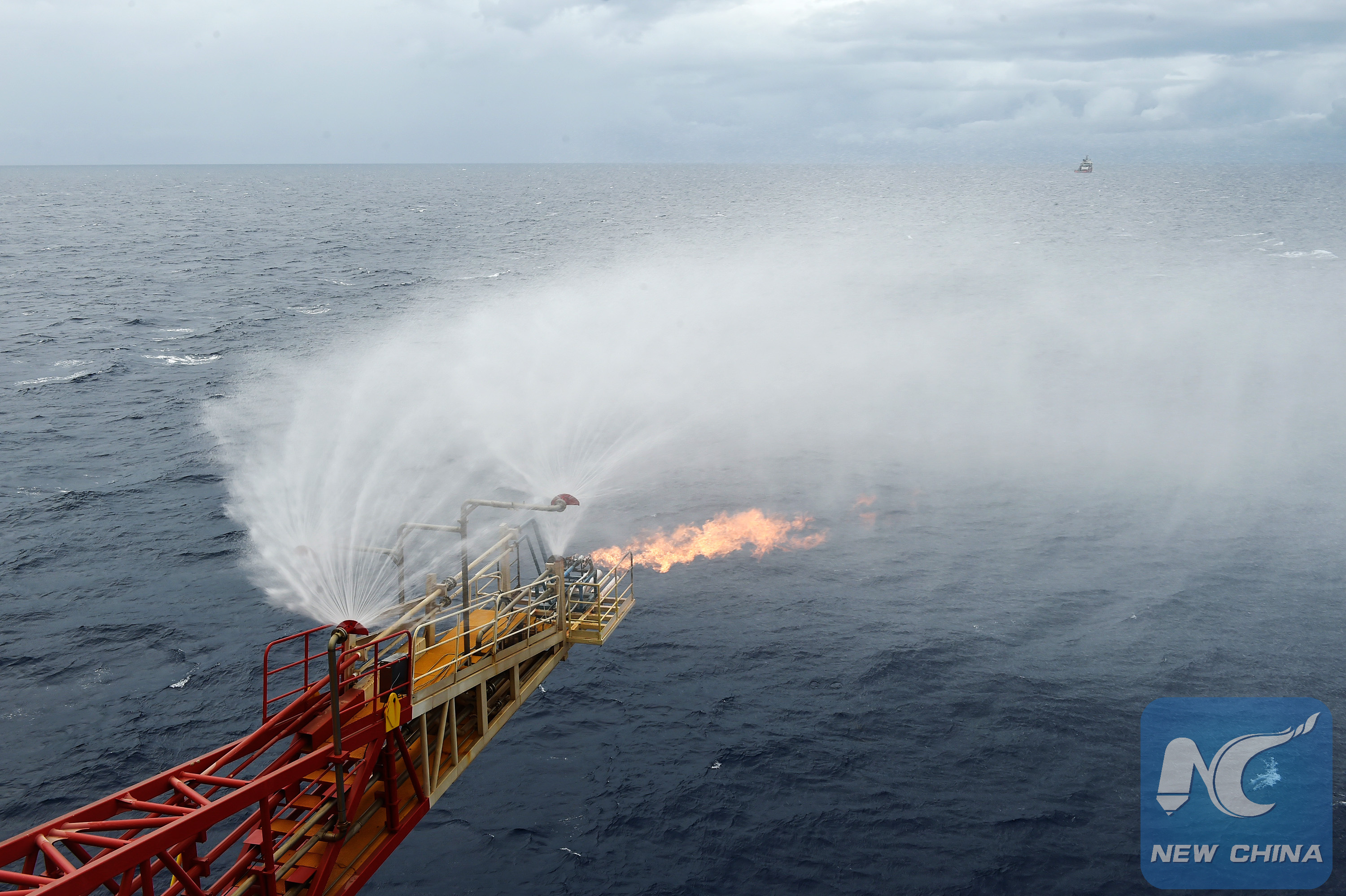
Flames spouting from the trial mining site of combustible ice in Shenhu area of the South China Sea, May 16, 2017(Xinhua/Liang Xu)
Combustible ice, a kind of natural gas hydrate, usually exists in seabed or tundra areas, which have the strong pressure and low temperature necessary for its stability. It can be ignited like solid ethanol.
One cubic meter of "combustible ice" is equal to 164 cubic meters of regular natural gas. International scientific circles have predicted that the natural gas hydrate is the best replacement for oil and natural gas.
C919
China also made a major progress in aviation as its homegrown large passenger plane C919 took its maiden flight on May 5. This makes China the fourth jumbo jet producer after the United States, Western Europe and Russia.
With a standard range of 4,075 kilometers, the narrow-body jet is comparable with updated Airbus 320 and Boeing's new generation 737 planes, signaling the country's entry into the global aviation market. The twin-engine plane has 190 seats at maximum capacity.
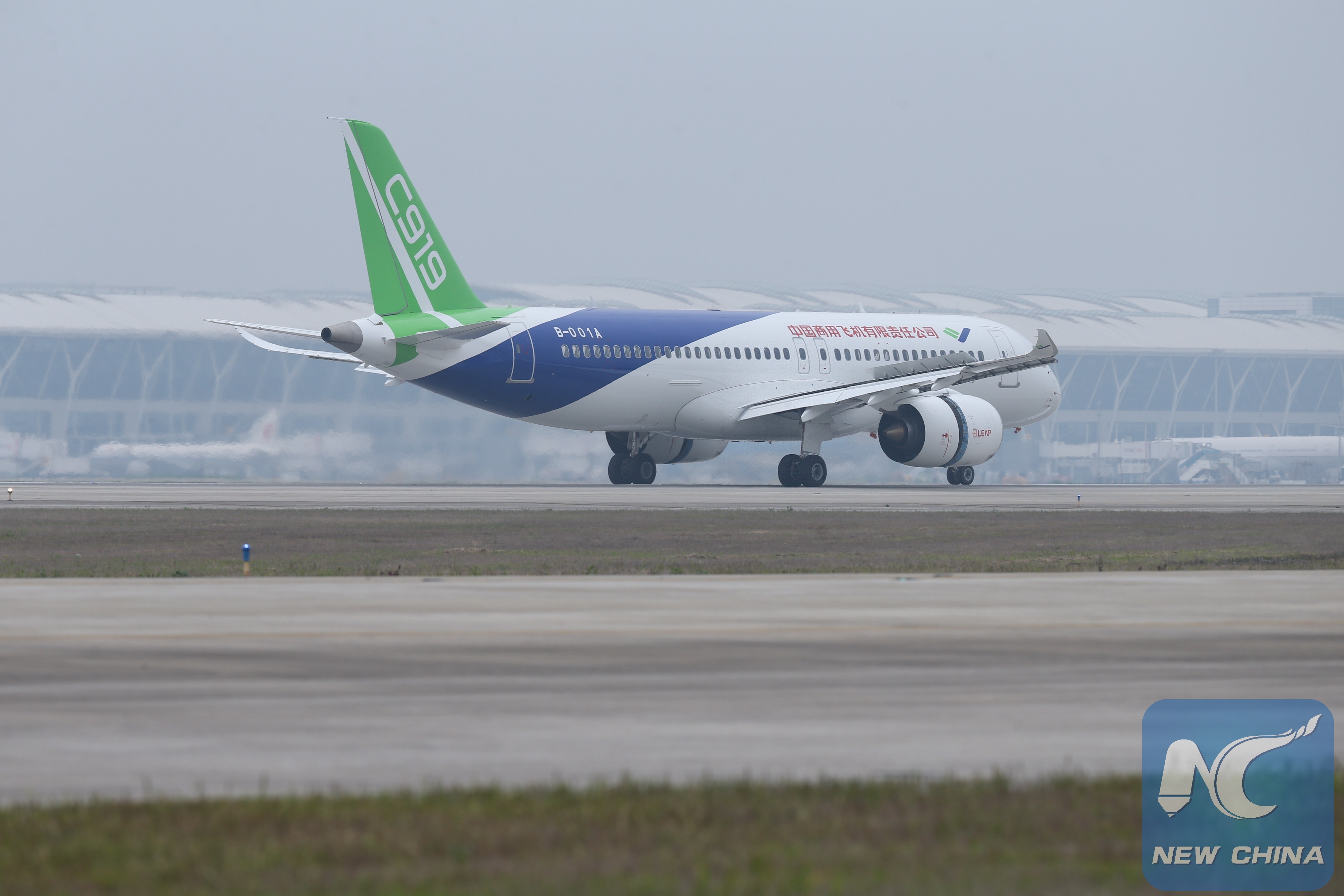
China's homegrown large passenger plane C919 taxies on a runway after its maiden flight in Shanghai, east China, May 5, 2017. (Xinhua/Ding Ting)
TIANZHOU-1
In April, China's first cargo spacecraft docked successfully with the Tiangong-2 space lab , a crucial step for the country in building a space station by 2022. A few days later, the cargo spacecraft and the space lab completed their first in-orbit refueling.
China is the third country, besides Russia and the United States, to master the technology of refueling in space.
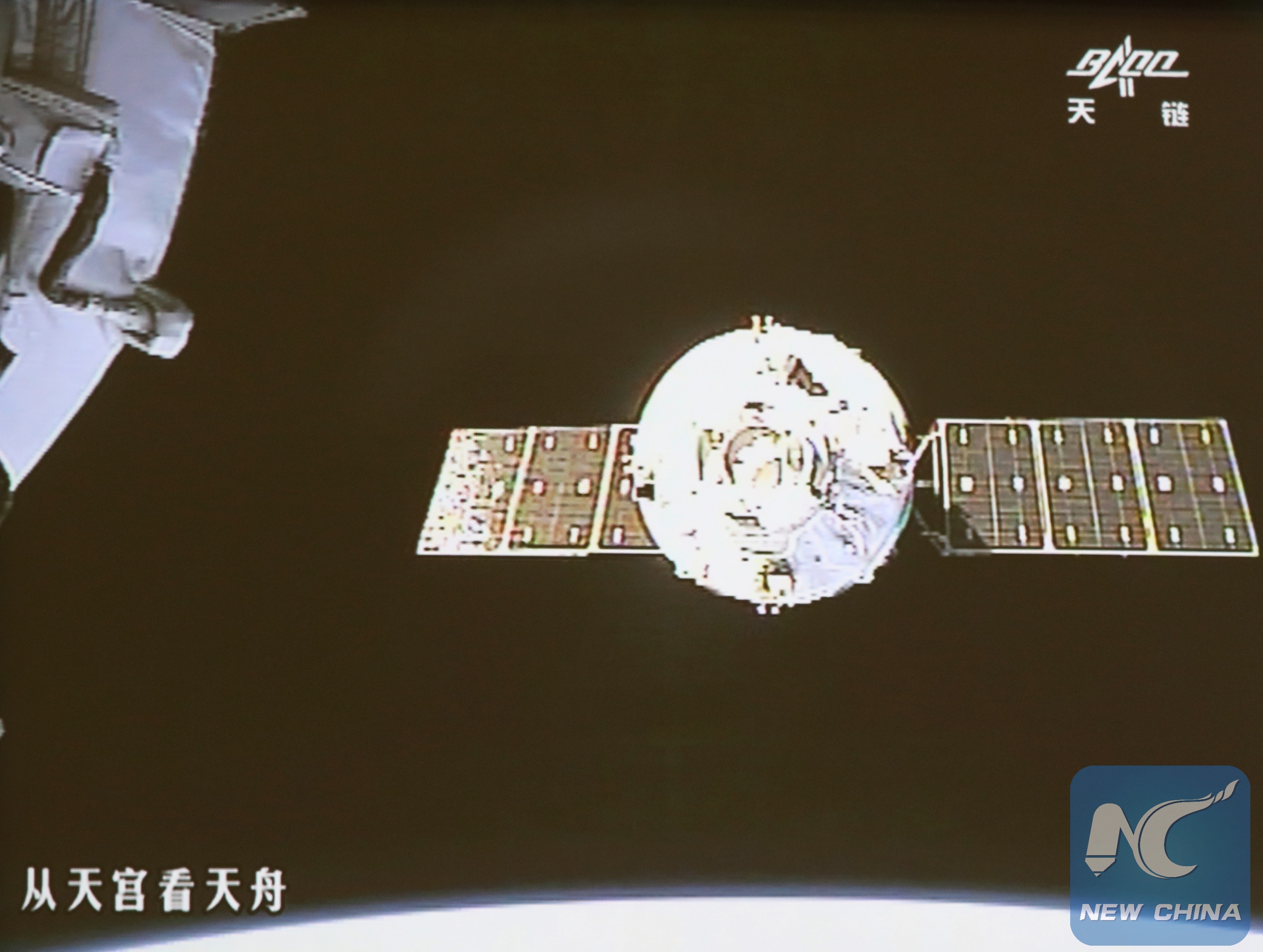
Tianzhou-1 cargo spacecraft is seen moving towards the orbiting Tiangong-2 space lab for automated docking on a screen at Beijing Aerospace Control Center on April 22, 2017 (Xinhua/Wang Sijiang)
In 1992, China set a three-step manned space program, with the final step marking the ability to operate a permanent manned space station, which is planned to be put into orbit around 2022.
As the International Space Station is set to retire in 2024, the Chinese space station will offer a promising alternative, and China will be the only country with a permanent space station.

Cargo spacecraft Tianzhou-1 is being transferred with a Long March-7 Y2 carrier rocket to the launch zone in Wenchang, south China's Hainan Province, April 17, 2017
AIRCRAFT CARRIER
China launched its first domestically developed and built aircraft carrier on April 26. It is the country's second aircraft carrier, coming after the Liaoning, a refitted Soviet Union-made carrier put into commission in the Chinese People's Liberation Army (PLA) Navy in 2012.
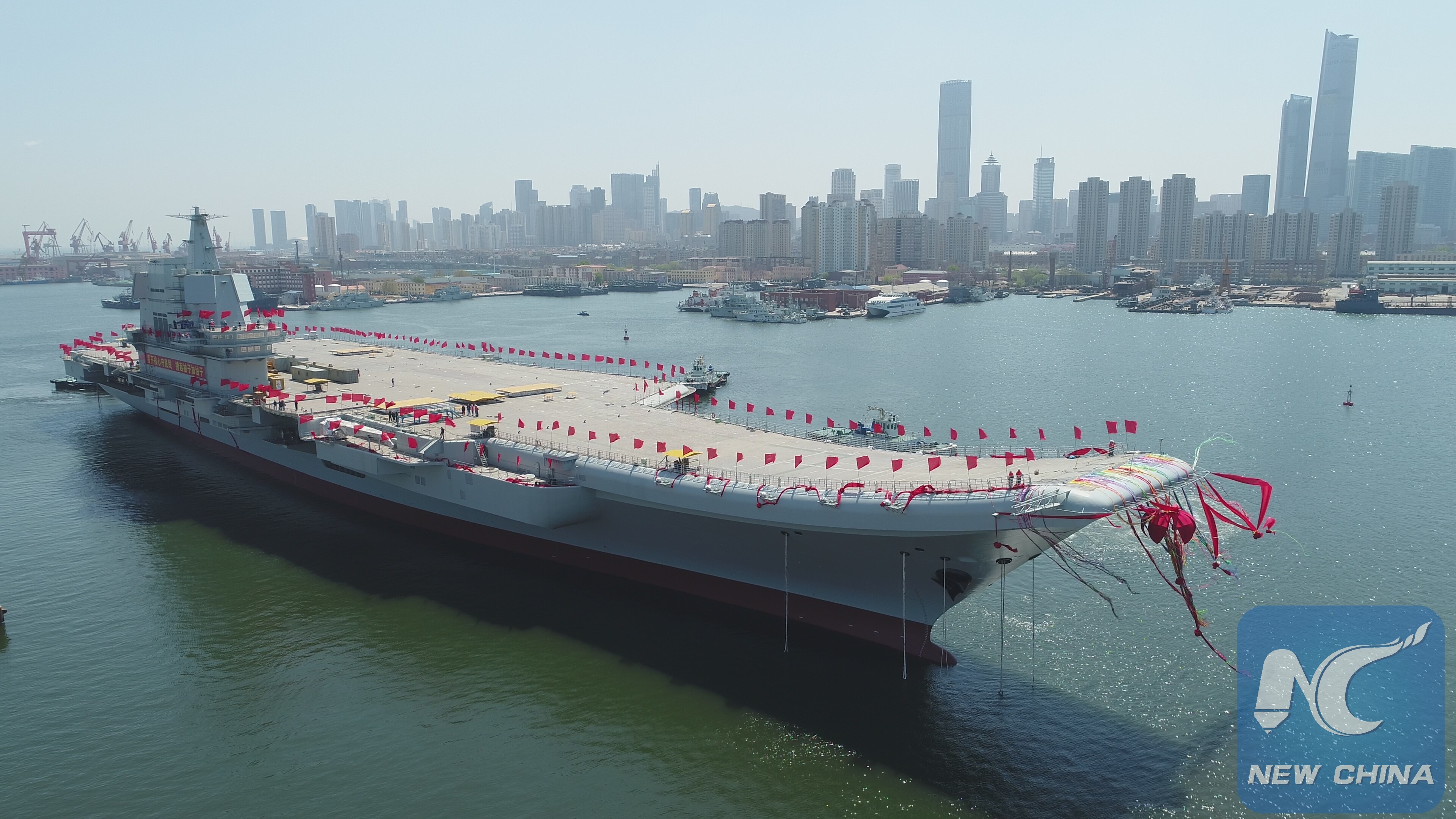
China's second aircraft carrier is transferred from dry dock into the water at a launch ceremony in Dalian Shipyard of the China Shipbuilding Industry Corp. in Dalian, northeast China's Liaoning Province, April 26, 2017. (Xinhua/Li Gang)

